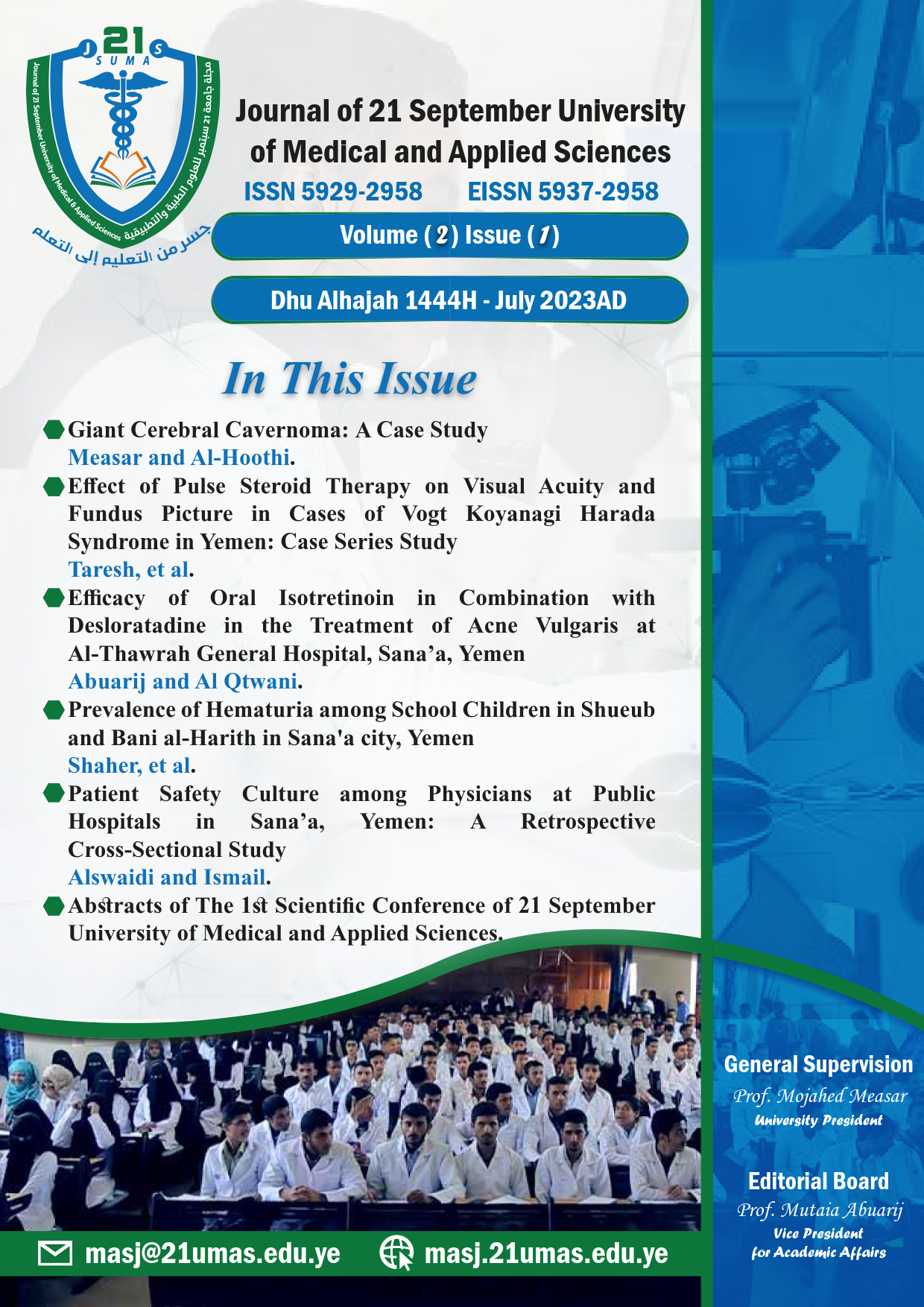Prevalence of Hematuria among School Children in Shueub and Bani al-Harith in Sana'a city, Yemen
Keywords:
Hematuria, dipstick, urinalysis, proteinuria, glucosuriaAbstract
Objective: Screening of kidney diseases by urinalysis in school children has been approved in many parts of the world with inexpensive tools such as urinary dipsticks. In this study, we investigated the prevalence of hematuria in a large sample of 6 to 15-year-old Yemeni school students in Shueub (located in the northeast of Sanaa city) and Bani al-Harith (located in the north of Sanaa city).
Design: A total population of 12,347 Yemeni students in primary and middle schools in Shueub and Bani al-Harith were investigated for hematuria during 2021. There were 7,299 students from Shueub and the remaining 5,048 were from Bani al-Harith, aged from 6 to 15 years old. All the examined children were apparently healthy and asymptomatic. Parents consents were taken prior to the test. A random fresh mid-stream urine was collected to complete the urine analysis (by dipstick and microscopy) to detect microscopic hematuria, albuminuria, or pus cells for each student.
Results: Among the 12,347 students screened and urine samples provided, 2,745 (22.23%) of the total population had hematuria, 1,822 (14.76%) from Shueub and 923 (7.48%) from Bani al-Harith. Analysis of the prevalence of hematuria in students in Shueub and Bani al-Harith showed that there was a very highly significant difference between the two areas (P value = 0.0000). There were 842 students (7% of the total population) had positive hematuria and 2,678 students (22%) had negative hematuria with a highly statistically significant difference between positive hematuria students and negative hematuria students (P value = 0.0044).
Conclusion: Asymptomatic hematuria might be detected by the school screening program and should be considered as an inexpensive way for early management of some renal diseases.
Downloads
Published
How to Cite
Issue
Section
License
Copyright (c) 2023 Journal of 21 September University of medical and applied sciences

This work is licensed under a Creative Commons Attribution-NonCommercial-NoDerivatives 4.0 International License.


